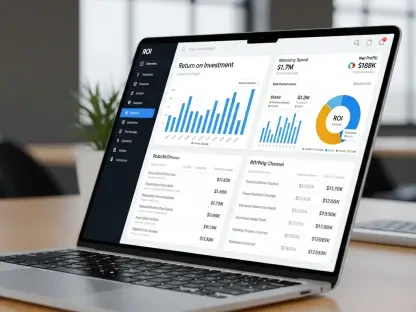Let me introduce Zainab Hussain, a seasoned e-commerce strategist with a deep background in customer engagement and operations management. With years of experience in the retail and B2B sectors, Zainab has a keen understanding of how technology, especially AI, is reshaping business procurement. Today, we’re diving into the exciting developments around AI tools in B2B buying, exploring how these innovations are streamlining purchasing processes, driving cost savings, and paving the way for predictive decision-making. We’ll also touch on industry-specific solutions and strategic partnerships that are set to transform operational landscapes.
How do you see AI fundamentally changing the landscape of business procurement in the coming years?
AI is poised to revolutionize procurement by moving it from a reactive to a proactive process. It’s not just about automating tasks; it’s about anticipating needs. Tools powered by AI can analyze vast amounts of data—past purchases, market trends, even internal spending patterns—to suggest smarter buying decisions before a need even arises. Over the next few years, I expect AI to make procurement more personalized and predictive, reducing waste and ensuring businesses have what they need exactly when they need it. It’s like having a strategic advisor built into every transaction.
What do you think is driving the timing of major players rolling out AI tools for B2B buying right now?
The timing feels right because of a perfect storm of technological readiness and market demand. Advances in generative AI and machine learning have reached a point where they can handle complex, enterprise-level challenges at scale. At the same time, businesses are under immense pressure to cut costs and improve efficiency, especially post-pandemic. There’s also a growing expectation for seamless, consumer-like experiences in B2B transactions. Companies are hungry for tools that simplify decision-making, and AI is finally mature enough to deliver on that promise.
Can you walk us through how a conversational AI tool might assist a first-time user in navigating a business purchasing platform?
Absolutely. Imagine logging into a procurement platform for the first time. A conversational AI tool acts like a friendly guide. It might start by helping you set up your account, asking about your business needs or budget constraints in plain language. If you’re unsure what to buy, you can ask it questions like, “What’s the best deal on office supplies for a small team?” It pulls from a database of options and tailors suggestions based on your input. It’s intuitive, real-time, and cuts through the overwhelm of endless product lists by focusing on what’s relevant to you.
How does AI leverage historical data to enhance purchasing recommendations for businesses?
AI looks at patterns in a company’s past purchases—say, how often they order certain supplies, in what quantities, or from which vendors. It uses that data to predict future needs and suggest more efficient options. For instance, if a business regularly buys printer ink every three months, the AI might recommend a bulk purchase or a subscription plan to save money. It’s all about spotting trends the human eye might miss and turning them into actionable insights that optimize both cost and time.
What role do features like savings analysis play in helping companies manage their budgets more effectively?
Savings analysis tools are game-changers for budget management. They dig into purchasing data to highlight areas where money can be saved—whether that’s through bulk buying, switching to a lower-cost supplier, or taking advantage of recurring order discounts. For a company, this means visibility into spending habits they might not have noticed otherwise. It’s like having a financial advisor focused solely on procurement, pointing out small changes that add up to significant savings over time without sacrificing quality.
How can AI tools balance the need for spending oversight with maintaining flexibility for businesses?
AI tools strike this balance by acting as a watchful eye without being overly restrictive. For example, a feature that monitors spending anomalies can flag unusual patterns—like a sudden spike in orders or purchases outside typical categories—and alert the right people. But instead of halting the process, it often just prompts a review or approval, so business operations aren’t disrupted. This way, companies get the oversight they need to prevent fraud or errors while still allowing teams the freedom to make necessary purchases quickly.
Can you explain how industry-specific AI solutions might address unique challenges, like inventory disruptions in manufacturing?
Industry-specific AI solutions are tailored to tackle pain points unique to sectors like manufacturing. Take inventory disruptions—AI can predict potential shortages by analyzing supplier performance, production schedules, and even external factors like shipping delays. It might suggest reallocating parts from another facility or expediting an order from a backup supplier. This predictive capability helps manufacturers avoid costly downtime by addressing issues before they spiral into bigger problems, keeping the supply chain humming along.
What excites you most about the potential of AI in transforming operational decision-making beyond just procurement?
What’s really exciting is how AI can extend into broader operational strategy. Beyond buying, it can help with things like predicting equipment failures in utilities or optimizing resource allocation in manufacturing. It’s about connecting the dots across an organization—using data to foresee problems and recommend solutions in areas that directly impact performance and reliability. This shift positions AI as a core part of decision-making, not just a tool for transactions, but a driver of long-term resilience and efficiency.
What’s your forecast for the future of AI in B2B e-commerce over the next decade?
I believe we’re just scratching the surface. Over the next decade, AI in B2B e-commerce will become even more integrated, almost invisible, as it embeds into every step of the buying and operational process. We’ll see hyper-personalized experiences, where platforms anticipate needs with uncanny accuracy, and predictive models that prevent disruptions before they happen. Collaboration between AI systems and human decision-makers will deepen, creating a synergy that drives innovation. Ultimately, AI will turn B2B e-commerce into a space where efficiency and strategic growth go hand in hand, reshaping how businesses operate on a global scale.









